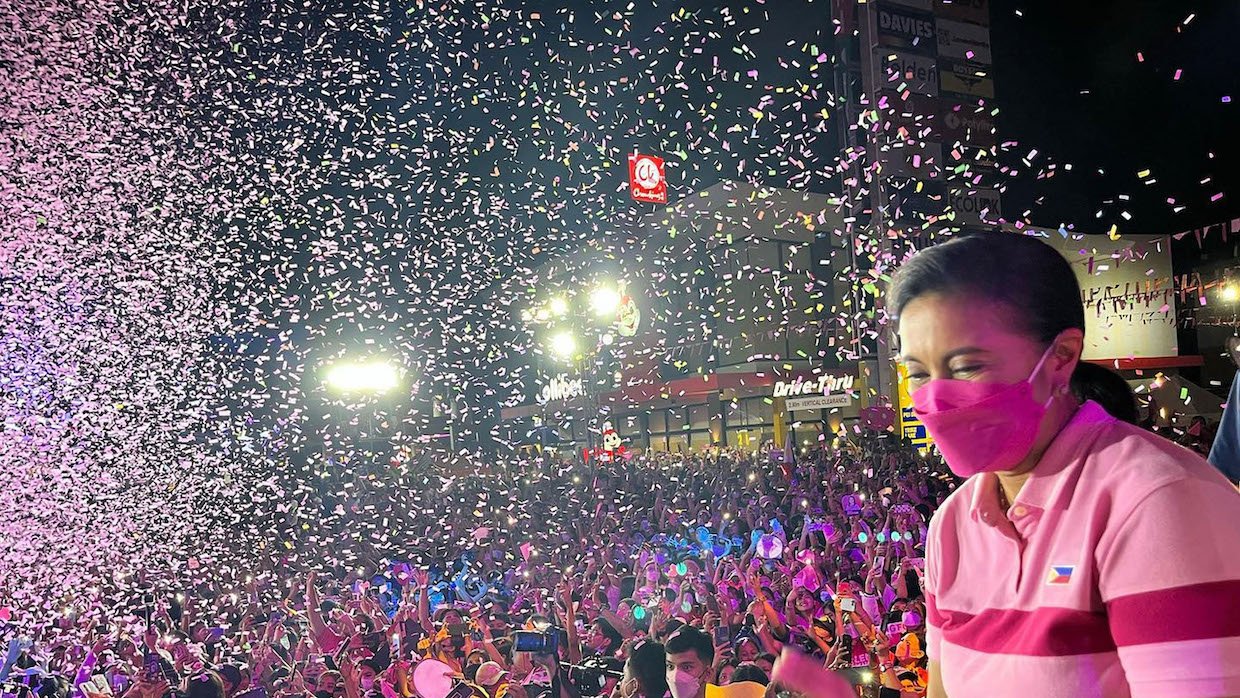 Back to selection
Back to selection
“Our Style Was Very Observational”: DP Bruce Sakai on And So It Begins
 And So It Begins, courtesy of Sundance Institute.
And So It Begins, courtesy of Sundance Institute. A companion to her 2020 film A Thousand Cuts, Filipino-American documentary filmmaker Ramona S. Díaz returns to Sundance with And So It Begins, which chronicles recent Filipino elections following the end of right-wing president Rodrigo Duterte’s term, which could either bring about the restoration of democracy or an increased shift toward nationalist leaders.
Cinematographer Bruce Sakai reveals how he was hired to shoot the project due to increased COVID restrictions, as well as the decision to employ a “very verité approach.”
See all responses to our annual Sundance cinematographer interviews here.
Filmmaker: How and why did you wind up being the cinematographer of your film?
Sakai: I first started as the AC during the first leg of the film, during the Philippines’s filing of candidacy for the 2022 presidential elections. I guess it was just happenstance that Ramona Diaz gave me a chance to DP after that period, because of factors that were happening during that time, such as COVID and heavy restrictions.
Filmmaker: What were the factors and attributes that led to your being hired for this job?
Sakai: COVID restrictions were the major factor in me getting hired for the film. During that time, it was hard to fly as a U.S.-based DP, especially when you had to quarantine for weeks. I guess Ramona also saw something in me to let me finish the film.
Filmmaker: What were your artistic goals on this film, and how did you realize them?
Sakai: My goal was to capture the authenticity of the moment. We went with a very verité approach—observational handheld work, natural lighting—which enhances the immediacy and intimacy in the story.
Filmmaker: How did you want your cinematography to enhance the film’s storytelling and treatment of its characters?
Sakai: I want my cinematography to capture not only the verbal content, but also the non-verbal cues and emotions. We also approached the subjects with sensitivity and responsibility, ensuring that the portrayal is respectful and mindful of the individuals involved.
Filmmaker: Were there any specific influences on your cinematography, whether they be other films, or visual art, of photography, or something else?
Sakai: I was really fascinated with the documentary film Cartel Land. I love how they intimately captured the scenes under those dangerous circumstance.
Filmmaker: What were the biggest challenges posed by production to those goals?
Sakai: The biggest challenge during production were heavy COVID restrictions.
Filmmaker: What camera did you shoot on?
Sakai: We shot the film using the Sony FX9.
Filmmaker: Why did you choose the camera that you did?
Sakai: It was the upgrade to the ever-reliable Sony FS7, which is my go-to for documentary.
Filmmaker: What lenses did you use?
Sakai: The lenses that I primarily used were the Canon 24-105F4 and Canon 70-200F4. We also used the Canon 16-35F2.8 and Canon 24-70F2.8 on certain occasions.
Filmmaker: Describe your approach to lighting.
Sakai: Our approach was verité. Where weren’t many situations that we could light, and our style was very observational. We captured the scenes as they unfolded.
Filmmaker: What was the most difficult scene to realize and why? And how did you do it?
Sakai: The most difficult part during production was really getting access to former Vice President Leni Robredo. As the campaign was run by different groups, there were certain situations where we weren’t allowed to come with her or we wouldn’t be given backstage access during the rallies. There are also moments that I would film solo, and our sound recordist Henry Lu got left behind. We would always talk our way into those situations, just to get access when certain individuals stopped us from capturing the scene.
Filmmaker: Finally, describe the finishing of the film. How much of your look was “baked in” versus realized in the DI?
Sakai: I never really took part in post-production, and I am excited to see how it turns out during the premiere.
TECH BOX
Film Title: And So It Begins
Camera: Sony FX9
Lenses: Canon 24-105F4, Canon 24-70F2.8, Canon 70-200F4, Canon 16-35F2.8
Lighting: Natural
